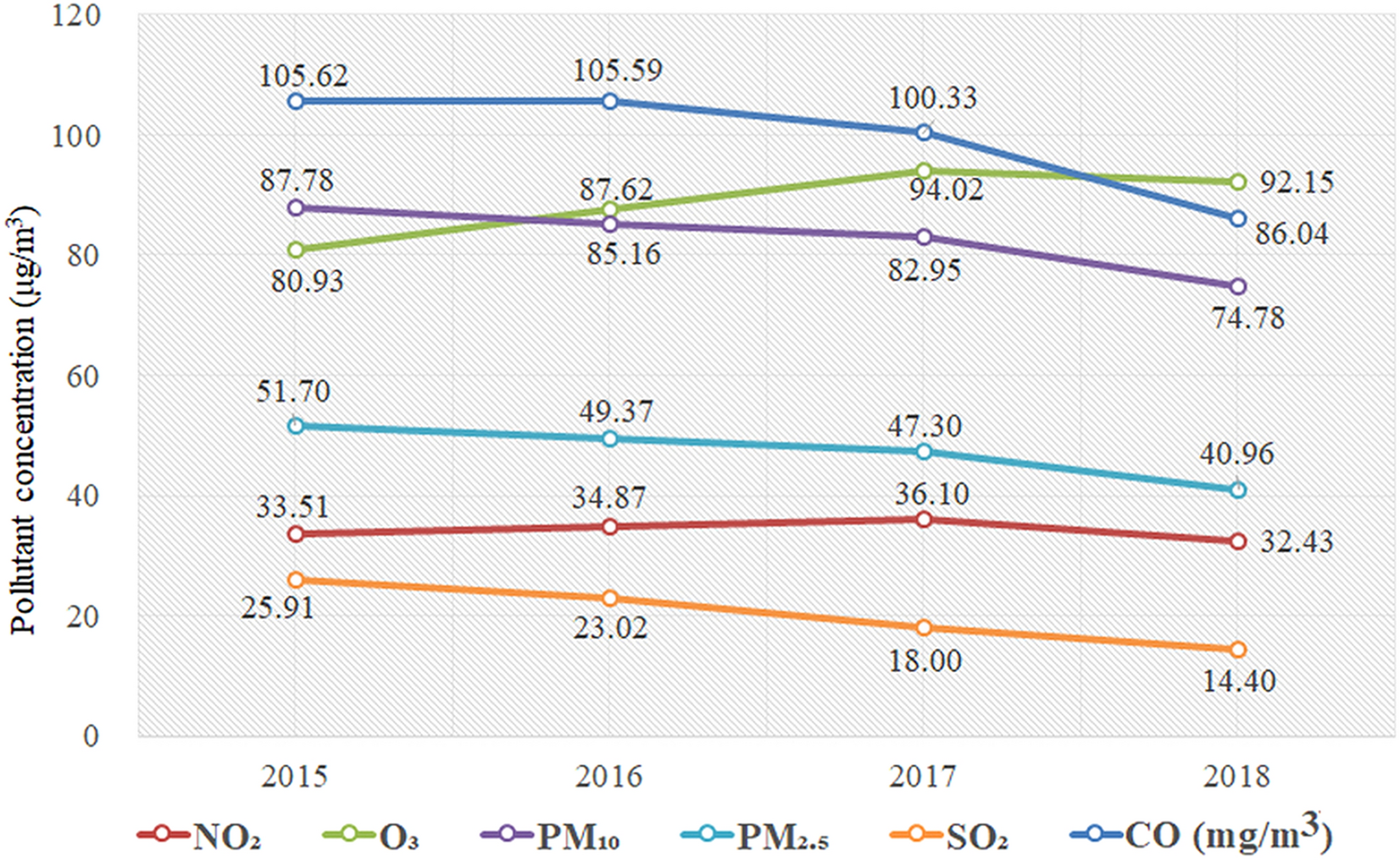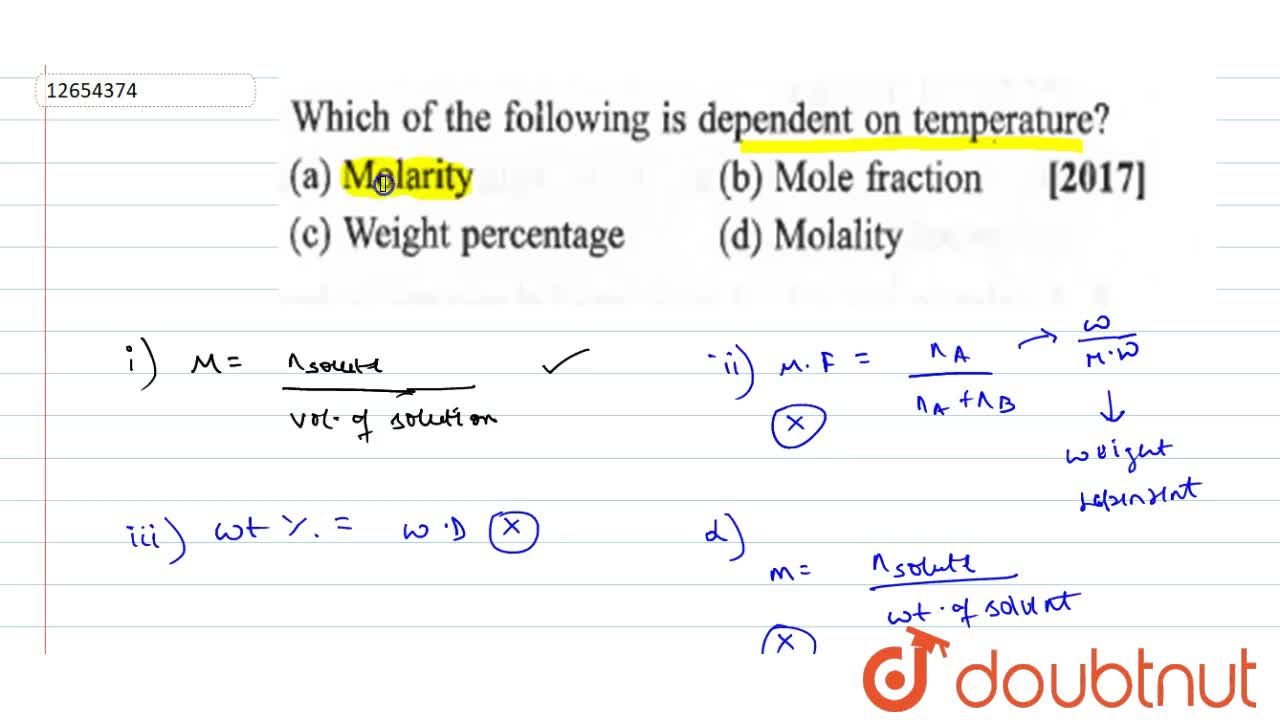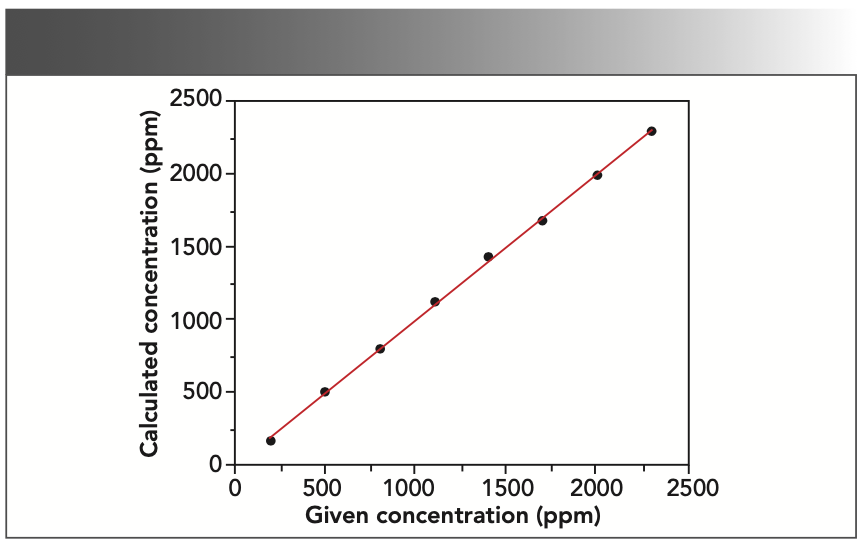5 Which of the Following Concentration Units Is Temperature Dependent
Even though the temperature dependence is considered linear in reality this linear coefficient itself depends on the ion concentration and temperature of a sample. For a specific photon energy fluence is proportional to exposure.
While a detailed analysis will not be presented here the errors which may be tolerated for these parameters in.

. IGCSE AQA GCSE Biology Edexcel GCSE Biology OCR GCSE Gateway Science Biology OCR GCSE 21st Century Science Biology. We generally recommend using Phusion DNA Polymerase at a concentration of 20 unitsml 10 units50 μl reaction. A solution with a molality of 3 molkg is often described as 3 molal or 3 m However following the SI system of units molkg or a related SI unit is now preferred.
Units are usually Molarity second Ms C. Another important characteristic is the critical micelle concentration CMC which is defined as the concentration of surfactants when the micelles spontaneously form. PH-dependent plant pigments that can be used as pH indicators occur in many plants including hibiscus red cabbage anthocyanin and grapes The juice of citrus fruits is acidic mainly because it contains citric acidOther carboxylic acids occur in many living systems.
The following sections to obtain an understanding of the influence of the several measured parameters - Total Ammonium mgL. The addition of surfactant reduces the interface energy and removes the hydrophobic groups of the surfactant from contact with. Its importance and limiting and interacting factors controlling the rate of plant photosynthesis and how t he ideas are applied to horticultural operations eg.
Print 5 4 print 31 2 Division is almost as straightforward but we have to remember that integer division is not the same as float division. However the optimal concentration of Phusion DNA Polymerase may vary from 1040 unitsml 052 units50 μl reaction depending on amplicon length and difficulty. Let us consider.
A float number has a decimal in it. Doc Browns school biology revision notes. C4H9Cl l H2O l C4H9OH aq HCl aq average rate decrease in concentration butyl chloride change in time Since concentration of the reactant decreases.
Critical micelle concentration Krafft temperature and cloud point. The units for expressing radiation energy concentration are either the millijoule mJ per square centimeter or erg per square centimeter. Temperature compensation 10 Section 2 Laboratory measurements 13 applications of pH measurement 15 Section 3 pH electrode systems 21 troubleshooting guide 21 electrode storage 26 Section 4 Principles of electrochemistry 27 the theory of potentiometric titrations Nernst Equation 27 potential of the pH measuring system 29 correlation of concentration and activity.
The following guidelines are provided to ensure successful PCR using. For most patients it is usually easier to avoid these differences in red cell concentration by ordering a certain number of units eg one or two rather than a particular volume of blood. Temperature scales differ in two ways.
The relationship between energy fluence and exposure is shown above under EXPOSURE. Younger children may require a fraction of a unit to avoid under- or over- transfusion. Since the volume of a solution is dependent on ambient temperature and pressure mass can be more relevant for measuring solutions.
The state of protonation of phosphate derivatives. And Salinity ppt if salinity corrections are appropriate - on the resultant Un-ionized Ammonia value. Prepare a 0100M solution butyl chloride in water and then measure the concentration at various intervals when it is involved in the following reaction.
The SI unit for molality is molkg. The following are all floats. It is an empirical scale that was developed by historical progress which led to its zero point 0 C being defined by the freezing.
For example lactic acid is produced by muscle activity. Note the trailing zero is not required although it is good style. The relationship changes with photon energy because of the change in photon.
The point chosen as zero degrees and the magnitudes of incremental units or degrees on the scale. Print 2 4 print 81 - 5 Multiplication is equally straightforward. The factory setting for α is 200 C.
The Celsius scale C is used for common temperature measurements in most of the world. Calculate the amount of substance concentration in mol L-1 molarity of an aqueous sodium chloride solution containing 0125 moles sodium chloride in 050 litres of solution. Write the answer include units of measurement 1 Calculating Amount of Substance Concentration Molarity c n V Question.
In all Five and Seven meters α can be adjusted from 000 C - which means no temperature compensation at all - to 10 C. 10 -9 and 356. For such children or for others who may need a specific volume the following calculation is generally.

Different A Synuclein Prion Strains Cause Dementia With Lewy Bodies And Multiple System Atrophy Pnas

Exploring The Relationship Between Air Pollution And Meteorological Conditions In China Under Environmental Governance Scientific Reports

Osmosis Is A Type Of Diffusion Meaning Molecules In This Case Water Travel From Areas Of A High Concentration Teaching Biology Preschool Science Fun Science

Skin Diagrams And Quiz Print Digital Distance Learning Integumentary System Teaching Human Body Systems Secondary Science

Enzyme Concentration An Overview Sciencedirect Topics

Factors Affecting Rate Of Chemical Reactions Adichemistry

Development Of Magnetic Nanocarriers Based On Thermosensitive Liposomes And Their Visualization Using Mag Visualisation Medical Science Effects Of Chemotherapy

Which Of The Following Is Dependent On Temperature

Substrate Concentration An Overview Sciencedirect Topics

Gas Chromatography Mass Spectrometry Gc Ms With Cold Electron Ionization Ei Bridging The Gap Between Gc Ms And Lc Ms

Synthesis Physical Properties And Light Emitting Diode Performance Of Phenazine Based Derivatives With Three Light Emitting Diode Physical Properties Physics

Effect Of Temperature On Rate Of Reaction Arrhenius Equation With Faq S

Factors Affecting Rate Of Chemical Reactions Adichemistry

Which Of The Following Is Dependent On Temperature






Comments
Post a Comment